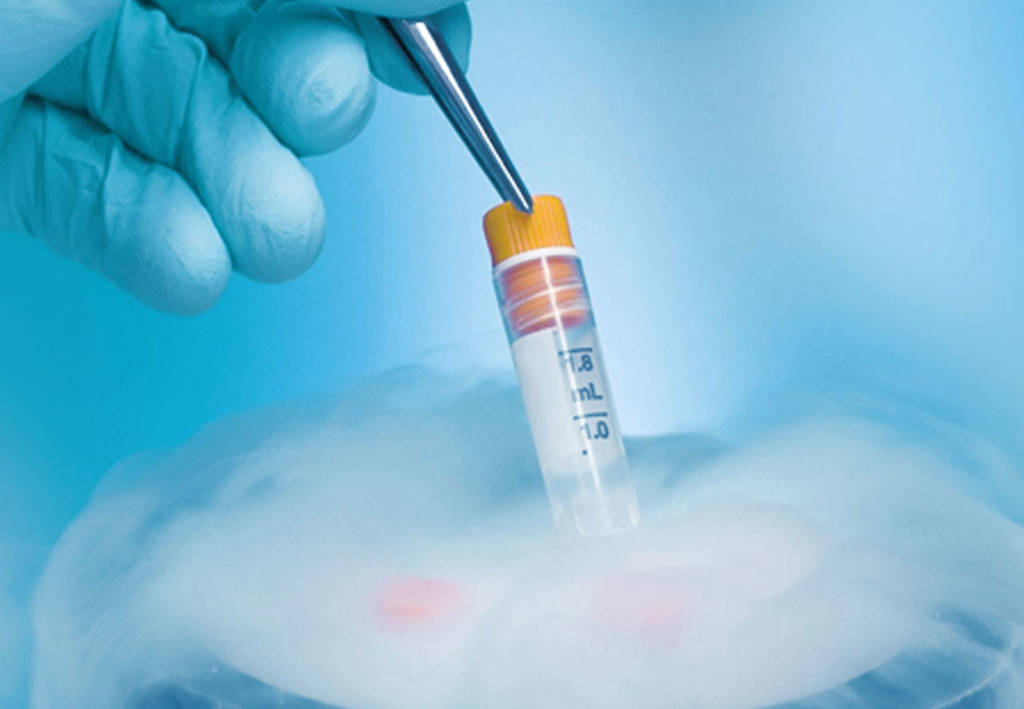Embryo freezing is a procedure that allows people to store embryos for later use. A person can also freeze eggs, which are not fertilized. An embryo forms after fertilization and after the cells start to divide.
A person may decide to store an embryo if they hope to become pregnant in the future, to donate to others, for medical research, or for training purposes.
Successful fertilization may lead to at least one healthy embryo. A doctor can then transfer the embryo to the womb, or uterus. If the treatment is successful, the embryo will develop.

Fertilization often results in more than one embryo, and the doctor can freeze and preserve the remaining embryos.
What is an embryo, and how do people create one?
Before freezing can take place, people need to create suitable embryos. To do so in the laboratory, doctors must harvest and fertilize some eggs.
First, the person will take hormones to make sure that ovulation happens on schedule. They will then take fertility medications to increase the number of eggs that they produce.
In the hospital, a doctor will extract the eggs, using an ultrasound machine to ensure accuracy.
A person may wish to freeze their eggs. Or, they may wish to use them at once to become pregnant. In this case, the doctor may recommend in vitro fertilization (IVF) or intracytoplasmic sperm injection (ICSI).
During IVF, the doctor exposes the eggs to sperm and leaves them in a laboratory for fertilization to take place. After this, the correct term for a fertilized egg is an embryo.
An embryologist will monitor the development of the embryos over the next 6 days, after which they may choose a suitable embryo for implantation.
They may do this if there is a problem with the sperm or if past attempts at IVF have not resulted in fertilization. The doctor may use one embryo and freeze the others.
How do people freeze embryos?
The main aim of freezing embryos is to preserve them for later use.
The biggest challenge is the water within the cells. When this water freezes, crystals can form and burst the cell.
Freeze-all cycles

To reduce the risk of this condition, a doctor may recommend freezing the embryo and transferring it when the ovaries are no longer stimulated.
A doctor can also use a freeze-all cycle to test an embryo for a genetic disorder. This involves removing a few strands of DNA and testing the chromosomes.
Embryos with a standard set of chromosomes are more likely to transfer successfully. Prescreening can ensure that future offspring have a lower chance of developing genetic diseases.
Possible risks include a slightly higher chance of genetic abnormalities in the child. It is important to note that, because this is a new procedure, the long-term health effects are not yet clear.
Also, women who become pregnant at a later age have a higher risk of complications.
Finally, treatment can be costly. However, it offers a wider range of options for people who wish or need to delay pregnancy, or who may otherwise be unable to conceive.
Benefits of choosing AgIstanbulHealth
Only top qualified doctors
JCI certificated hospitals
Free COVID-19 Test before departure
4 nights in a 5-star hotel in Istanbul
Costs for laboratory, medication and equipment
Pre/post-operative tests
Free Istanbul tours
Latest technologies
Excelent travel assistance
All-round VIP transfer
Credit / Debit cards accepted
No prepayment
Personal assistants speak in English
24/7 customer service

